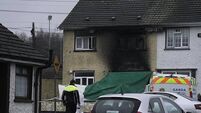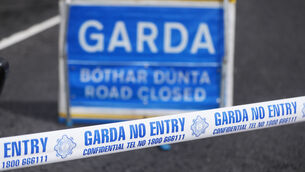Frank Taaffe: Athy - ‘A corporate town on the River Barrow’

The River Barrow flowing through Athy
DESPITE difficulties posed by Cromwellians forces the economic recovery of the latter part of the 17th Century had its beginning in the 1650’’s . Unfortunately for the Catholic Irish they were not to share in this development. The Cromwellian plantations although not as successful as planned nevertheless brought great changes in the ownership of property as between Protestants and Catholics. The Catholics who managed to remain in Irish towns had no power and little control, if any, over the creation of wealth. While encouragement was given to the setting up of manufacturing processes in Irish towns, the ownership of these generally iron works and cloth manufacturing rested with protestant proprietors. Daniel Hutchinson, a prominent follower of Oliver Cromwell established a cloth manufacture in Athy around this time.
As parliamentary control increased, Ministers were appointed and paid by the exchequer to preach the State religion. In September 1653, we find Murdo McKenzy being directed to preach in Irish as well as in English in the precincts of Athy. On the 3rd March 1655, the Commissioners in Dublin Castle ordered that James Carey was to preach in Irish at Brides Parish, once every Sunday and that he was to occasionally go to Trim and Athy to preach for which he was allowed a salary of £60 per annum.
James Carey was a former Catholic Priest whose ministry proved unacceptable to the Irish. In August 1655, he complained that the members of his congregation were very remiss in coming to hear him preach and that they rather preferred to spend the hours appointed for church service in “frequenting ale houses or indulging in unwarranted exercises” Whatever about the lack of Church attendance, there appears to have been some Catholics in Athy who conformed to the state religion. The sincerity of the conformists was however doubted for in July 1654 an order was issued to John Murcit to examine the conversion of the Irish about Athy who for that reason had not been transplanted. The subsequent report bore witness to the unsatisfactory nature of the conversions for in the civil list of 1655, the words “to preach in Irish” written after McKenzy’s name was erased suggesting that preaching in that language ceased. Despite Murdo McKenzy’s failure, conformity to the state religion was pursued with some vigor in the period 1660 to 1690 but not as vigorously as in the penal laws period.
It is not known where the services of the church of England were held following the Reformation. St. Michael’s Church, the ruins of which stand today in the grounds of St. Michael’s Cemetery was possibly used but the church which formed part of the Dominican Friary was also available despite the damage suffered during the Confederate war. In 1682 a bell was provided for what was believed to be a new church built on open ground next to the site of the former Dominican Friary. Around the rim of the bell was the following inscription “This bell was made in the year 1682 for the church of Athy, Robert Somerton and Anchor Willis Chirch RWD”. The bell was bought by Athy’s Town Commissioners following the construction of the present St Michael’s Church on the Carlow Road. Today the bell hangs on the Town Hall.
In 1657 the first of several acts was passed which required Catholic’s to renounce the Pope’s spiritual and temporal authority, catholic doctrine and the claim of the Stuart pretender to the English throne. The education of the children of the protestant settlers was not neglected for about 1660 onwards, a Latin school was maintained in Athy initially by one Issac Dalton. He was a proprietor of the school for over forty years and was succeeded by John Garnet.
In 1659, the population of Athy numbered 565 of which 83 were English and 482 Irish. The population of Naas that same year was 303 inhabitants. In the townland of Athy there were 273 Irish and 61 English, in St. John’s there were 93 Irish and 4 English and in St. Dominic’s Abbey, there were 86 Irish and 6 English. In Woodstock, there were 113 Irish and 12 English. The above details relating to the town of Athy are taken from Penders “Census of Ireland 1659”.
In 1662, William Weldon of St. John’s, a member of parliament for Athy from 1661 writing of Athy stated that two priests names Fitzgerald and Carroll daily frequented the town and “lately said mass in the middle of the town several times”. On a particular Sunday, Weldon wrote, Fitzgerald was found “at his devotions” attended by about 500 persons. Being arrested the Priest was rescued four times by the people but was eventually taken prisoner by the soldiers. Around this time, Fr. Raymond Moore, Prior of Athy’s Dominican Friary in 1651-52 and again from 1661-62 was arrested and imprisoned in Dublin where he died in 1665. He was yet another of Athy’s martyrs as Fr. Richard Oventon sub prior of Athy had been murdered by Cromwell’s soldiers in Drogheda inn 1649.
After the first years of the Cromwellian’s plantation, the Irish Catholics began to move back into the towns and to regain some of their previous prominence. Alarmed at the development, the protestant settlers demanded tougher measures to curtail the catholic populations. Under the Test Act of 1673 Catholics were barred from all civil, judicial and military offices. In 1678 following the Titus Oates plot all regional and secular catholic clergy were banished from Ireland.
Despite the religious prosecution which followed the Titus Oates plot, Ireland was relatively peaceful while religious prosecutions accelerated following the Battle of the Boyne. We leave Athy with Sir William Petty’s description of the town in 1682, “A corporate town on the River Barrow everyway commodious for trade, but no manufacture being driven, poor”.
FRANK TAAFFE






